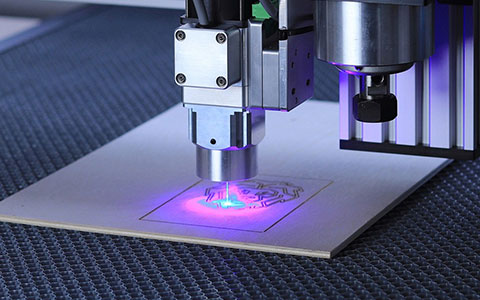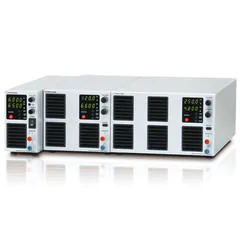
What is a LASER?
LASER is an acronym for Light Amplification by Stimulated Emission of Radiation.
In general, light is a mixture of different colors.
In other words, light of various wavelengths is mixed together, but lasers emit and amplify only light of specific wavelengths. It is a type of artificial light that does not exist in nature.
When emitting a laser, an excitation light is first applied to a specific gas or solid. The electrons in the molecules and atoms that make up the gases and solids are then excited and become energetic. An atom in an excited state is very unstable and tries to return to its original state by releasing energy.
This is called stimulated emission. Furthermore, when the stimulated emission light collides with another atom in an excited state, light is emitted in the same direction. Amplification in this way produces coherent light that is in wavelength and phase.
Laser Features
A laser is a type of light, but it is different from natural light or light emitted from ordinary lighting. Some of the features that only lasers have include the following
- Single wavelength
- Excellent directivity
- High energy density
- High coherence
Non-laser ordinary light contains light of various wavelengths. In addition, normal light travels randomly because the directions and phases of the light are not uniform. However, since lasers are light consisting of a single wavelength, the light contained in a single laser is of a single color.
Since the direction of the light is aligned, it does not spread and is highly directional. For the same reason, it has a high energy density, and its energy does not decrease as it moves away from its source, compared to ordinary light.
Lasers are also prone to interference. Unlike ordinary light, it is in phase, so it is prone to interference if it hits an obstacle. Since light is usually a mixture of various wavelengths, interference is less noticeable than with lasers.

Types of lasers and the use of lasers with relatively low output power
Lasers can be broadly divided into the following four types depending on the material of the laser oscillation source.
- Solid state laser
- Liquid laser
- Gas laser
- Semiconductor laser
Lasers are also classified by power output. The classification by output is called "class," and there are subclasses such as Class 1M within Class 1 through Class 4. Therefore, it is divided into 8 categories in total
Lasers classified as Class 1 and Class 2 lasers are considered to have relatively low output power. Liquid lasers and some semiconductor lasers are often used as the oscillation source. In particular, semiconductor lasers, also called laser diodes (LDs), are widely used as a compact and versatile laser light source.
There are three types of liquid lasers: organic dye lasers, liquid inorganic lasers and organic chelate lasers. Liquid lasers are characterized by their ability to emit lasers of various wavelengths. This means that very colorful lasers can be produced.
On the other hand, since the output of liquid lasers is not very high, they are often used for decorating stage events. In addition to its versatility, the high directivity characteristic of lasers makes it possible to color the event venue with laser beams.
Because semiconductor lasers are characterized by their relatively low output power and small size, they are used in laser pointers, laser mice, and for reading and writing laser disks.
Examples of uses of lasers with relatively low power output would include laser markers, LiDAR (laser imaging, detection, and ranging), laser rangefinders and other measuring instruments, laser microscopes, and sensors. For measurement applications like LiDAR, a laser with low output power is basically a laser beam that bounces off an object and returns.
Because of its low power output, the laser does not alter the target it hits, and its high directivity and interference make it suitable for flying to remote locations or detecting changes in motion.
Class 1 and Class 2 lasers are considered to have an output level that is safe to hit the eye or skin for a short time if the light is not focused.
Utilization of high-power lasers
Lasers that fall into Class 3 or Class 4 are higher-power lasers.
High-power lasers have high energy and therefore become very hot when they hit the object. Therefore, lasers with high output are often used to melt or vaporize objects with their heat.
There are many ways to utilize lasers with high output power, including laser cutters and laser processing of sheet metal (cutting, drilling, etc., in which the object is melted by the heat of the laser and then removed). Similar processes include trimming and scribing (break-off process).
Laser welding is another type of processing that uses the heat of a laser to melt an object. In laser welding, the melted object is not ejected, but is used as is.
Laser marking also utilizes lasers to alter only the surface of the object rather than melting it.
Processing by laser is characterized by the ease of adjusting the position of the laser beam and the strength of the laser. Therefore, paper, wood, and thin sheets of metal can be cut as delicately as if they were lace.
Solid-state lasers, gas lasers, and semiconductor lasers are examples of lasers that can produce high output power.
There are several types of solid-state lasers, including YAG lasers, YVO4 lasers, and fiber lasers. Gaseous lasers include carbon dioxide lasers, argon ion lasers, and excimer lasers such as ArF used in semiconductor lithography.
Although the laser output from a single semiconductor laser is not very high, it can be increased in power by using a diode laser stack or by focusing many laser diodes. High-power semiconductor lasers are also used in optical communications, medical instruments, and as light sources for pumping.
Class 3 to Class 4 lasers are extremely dangerous not only to the eyes but also to the body because of the high temperatures they generate when they hit an object. Therefore, facilities and companies with machines that emit lasers must be very strictly controlled.
It is also dangerous to gaze at the object being hit by the laser, so appropriate protective equipment may be required when using the device.
Reference (Japanese site)
- Panasonic - レーザマーカ技術のご紹介 - レーザの原理
(https://www3.panasonic.biz/ac/j/fasys/special/tech_lasermarker/principle_of_laser/index.jsp) - KEYENCE - レーザーとは?
(https://www.keyence.co.jp/ss/products/marker/lasermarker/basics/principle.jsp) - KEYENCE - レーザ安全規格とクラス分類について
(https://www.keyence.co.jp/ss/products/measure/library/basic/laser_safety.jsp) - KEYENCE - レーザーの安全基準・安全対策・規格
(https://www.keyence.co.jp/ss/products/marker/lasermarker/basics/safety.jsp) - KLV - 【図解】レーザーの種類とそれぞれの原理や特性、使われ方を基礎から解説
(https://www.klv.co.jp/corner/lazer.html)
Recommended products
Our high-stability, low-noise DC power supplies are ideal for precisely driving laser diodes.










